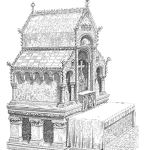
A listing of online tools and resources that may interest safety or reliability professionals. Always check how well the tools work before using for serious decisions.
- AIChE Chemical reactivity worksheet: https://www.aiche.org/ccps/resources/chemical-reactivity-worksheet
The Chemical Reactivity Worksheet (CRW) is a free software program you can use to find out about the chemical reactivity of thousands of common hazardous chemicals, compatibility of absorbents, and suitability of materials of construction in chemical processes.
- EPA Consequence modeling software (empirical models), ALOHA: https://www.epa.gov/cameo/aloha-software
ALOHA allows you to enter details about a real or potential chemical release, and then it will generate threat zone estimates for various types of hazards. ALOHA can model toxic gas clouds, flammable gas clouds, BLEVEs (Boiling Liquid Expanding Vapor Explosions), jet fires, pool fires, and vapor cloud explosions.
- NIST CFD modeling for fire and smoke, Fire dynamic simulator (FDS): https://pages.nist.gov/fds-smv/
Fire Dynamics Simulator (FDS) is a large-eddy simulation (LES) code for low-speed flows, with an emphasis on smoke and heat transport from fires.
- Kenexis Open PHA, HAZOP, LOPA: https://www.kenexis.com/software/openpha/
Open PHA is a free application in its desktop format, downloadable for Windows, Mac, and Linux.
Create fault tree, calculate probability, get the reports and save the fault tree to your own computer.
- ALD, Failure rate and MTBF estimator: https://aldservice.com/Reliability-Software/free-mtbf-calculator.html
Free software for Reliability Prediction. You enter electronic or mechanical component data and receive its predicted MTBF (Mean Time Between Failures) and Failure Rate.
- ThinkReliability, Root cause analysis excel template: https://offers.thinkreliability.com/root-cause-analysis-excel-template
Fee root cause analysis excel template contains a worksheet to help with root cause investigations.
- TNO books for consequence modeling and risk analysis (pdf): https://www.gexcon.com/products-services/coloured-books/
The “Coloured Books” are used around the world as valuable standard reference material in safety studies.
Yellow book: Methods for the calculation of Physical Effects Due to releases of hazardous materials
Green book: Methods for the determination of possible damage to people and objects resulting from releases of hazardous materials
Purple book: Guidelines for quantitative risk assessment
Red book: Methods for determining and processing probabilities
- ProSIS, SIL verification: https://www.prosisfse.com/sil-verification/
A simple and easy to use user interface with pre-built fault trees. The fully functional Web based tool is available to use for free with limited usage.
 Ask a question or send along a comment.
Please login to view and use the contact form.
Ask a question or send along a comment.
Please login to view and use the contact form.
Leave a Reply